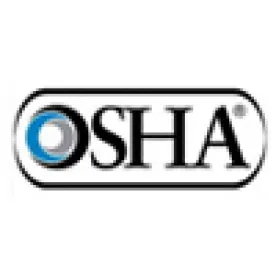At a recent American Bar Association meeting, Dorothy Dougherty, Acting Assistant Secretary of Labor for OSHA and Tom Galassi, Acting Deputy Assistant Secretary of Labor for OSHA both noted that while there has been a change in the Presidency and political administration, OSHA is moving along uninterrupted, for now. Galassi noted that the agency will continue to focus on recalcitrant employers using enterprise wide enforcement and other programs such as the Severe Violator Enforcement Program Galassi discussed several key issues in enforcement such as the penalty structure, corporate wide settlement and the severe injury reporting requirements.
Penalties
After the initial increase in penalties last year, OSHA has the authority to raise penalties on an annual basis. For 2017, the current maximum penalties are as follows: willful/repeat – $ 126,749, serious, other-than serious and failure to abate – $12,675.
Galassi noted that the average penalty per citation has increased. For employers with less than 10 employees the average penalty in 2015 was $2,297 compared to $3,080 penalty issued in 2016. Similarly, large employers with over 250 employees saw the fines almost doubled from $5,915 in 2015 to $10,065 in 2016. For all establishments, the average penalty increased from $3,285 to $5,087 in 2016.
The increase in penalties has likely impacted the number of contested cases, which also increased. In 2015 roughly 7% of citations were contested by employers and that increased to roughly 10% in 2016.
Corporate Wide Settlement Agreements
Galassi discussed the value in corporate wide settlement agreements which seek to address hazards that may be present in a number of an establishment’s facilities. For OSHA, these corporate wide settlement agreements provide specific detail about the type of abatement required and allow broader abatement then under a traditional settlement agreement. According to OSHA, the key elements in any such agreements include the implementation of a safety and health management system, the use of third-party consultants and providing OSHA access to periodically monitor the progress of implementing the terms of the settlement agreement. Corporate wide settlement agreements also contain dispute resolution provisions which allow OSHA and the covered employer the ability to work out issues of non-compliance without issuing immediate citations for failing to abate the hazard.
Severe Injury Reporting Rule
In 2015, OSHA finalized a rule requiring employers to notify OSHA of in-patient hospitalizations of one or more employees, amputations, loss of an eye or fatalities. Since the implementation of that rule, OSHA has reported receiving roughly 280 reported injuries a week. For calendar year 2016, OSHA received 10,887 reported injuries with 8,100 being hospitalizations and 2,672 being amputations. One-third of these reported injuries resulted in OSHA conducting a formal inspection and OSHA noted that they are inspecting more amputations than hospitalizations. These figures are similar to those reported in 2015.
Enforcement Indicators
On average the number of inspections OSHA conducts in a year does not fluctuate greatly. In fiscal year 2015 OSHA conducted approximately 35,820 inspections and for fiscal year 2016 roughly 31, 948 inspections were conducted. Galassi claimed the slight decrease is due to fewer number of compliance officers and the shift to using the enforcement unit metric. In fiscal year 2016 OSHA conducted more unprogrammed inspections which included about 3,000-4,000 inspections under the sever injury reporting rule. The number of compliant inspections per year continue to go up and in fiscal year 2016 28% of inspections were compliant related, compared to only 20% in fiscal year 2010.
On the Horizon
It remains to be seen whether these key enforcement initiatives continue to be the backbone of OSHA once a new Secretary of Labor and Assistant Secretary of Labor are confirmed. Employers are eager to see an OSHA that embraces safety and health from a compliance perspective as opposed to one solely from an enforcement perspective.




 />i
/>i

